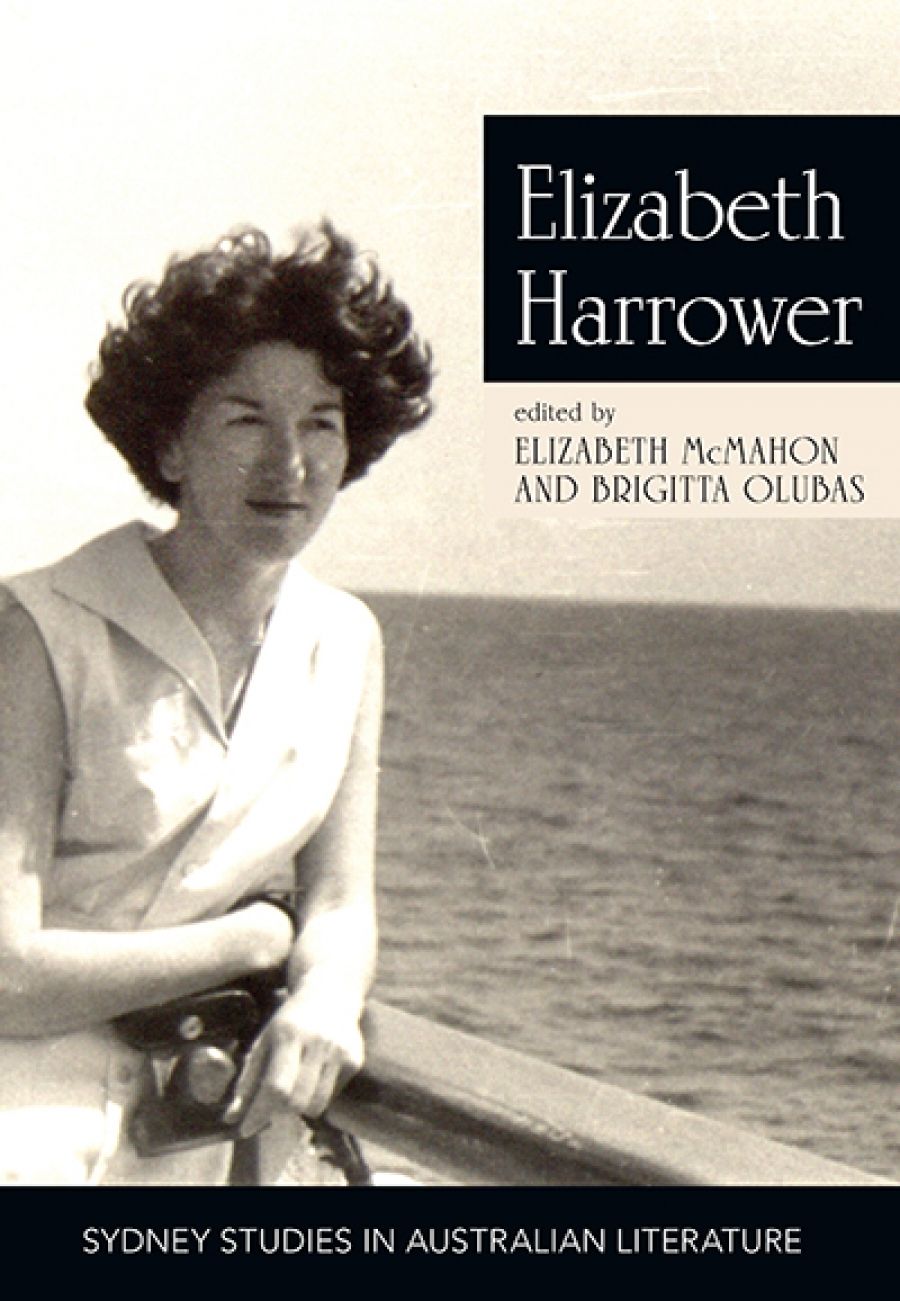
- Free Article: No
- Contents Category: Essay Collection
- Custom Article Title: Susan Sheridan reviews 'Elizabeth Harrower: Critical essays' edited by Elizabeth McMahon and Brigitta Olubas
- Review Article: Yes
- Online Only: No
- Custom Highlight Text:
The appearance in 2014 of In Certain Circles, a new novel from Elizabeth Harrower, was an important literary event. The author, who still lives in Sydney, had published nothing since 1966 and had repeatedly maintained that she had nothing more to say. In Certain Circles had been ready for publication in 1971 ...
- Book 1 Title: Elizabeth Harrower
- Book 1 Subtitle: Critical essays
- Book 1 Biblio: Sydney University Press, $40 pb, 151 pp, 9781743325599
At the time when Harrower apparently signed off with The Watch Tower (1966), her work was highly regarded. The early novels, Down in the City (1957) and The Long Prospect (1958), set in Sydney and Newcastle where she had grown up in the 1930s and 1940s, were published while she lived in London. Her return to Australia saw the appearance in 1960 of her London novel, The Catherine Wheel. At that time, Max Harris wrote in Australian Letters, a leading literary magazine of the period, that, in describing in depth ‘the evil of the ordinary’, Harrower saw ‘deep into [its] destructive core’, and he called The Long Prospect a major postwar work of Australian literature. A survey of her four novels in 1970 made the same claim for The Watch Tower.
Despite this high praise for a young writer, her novels fell out of sight and out of fashion in the 1970s, although paperback editions kept them on the shelves. Harrower enjoyed a second period of critical recognition in the 1980s, when feminist critics drew attention to her dramatisation of domestic bullying and sado-masochistic relationships, and her repeated focus on young women’s struggles for independence.
The present collection of twelve critical essays grew out of a symposium on rediscovering Harrower’s four earlier novels, and newly discovering In Certain Circles. The authors take advantage of the longer time perspective to re-situate her writing in its historical contexts (showing, for example, its references to World War II, Nazism, and the Holocaust), and demonstrate in various ways the editors’ claim that Harrower’s fiction ‘speaks of and to the larger world through the domestic and the intimate’. They offer readings framed by contemporary critical concerns with the transnational locations of Australian writing, and with themes of place and time and modernity. However, while some essays attend to Harrower’s uses of genre, there is little interest in style, aesthetic influences, or links to other writers’ work.
The collection, developed through a writing process where contributors have obviously been encouraged to refer to one another’s work, conveys a strong sense of them talking to each other, exchanging insights. Yet insights into intellectual frameworks outweigh the sharing of pleasures in Harrower’s writing; as a long-time admirer of Harrower’s work, I found this somewhat alienating. Instead of sending me back to the novels to revisit their excitements and pleasures, the essays more often sent me back to check against claims that seemed to me off-key or simply beside the point. Talking to one another, a number of these critics seemed to be turning their backs on engaging other readers. Yet there are gems, like Michelle de Kretser’s brief and brilliant piece on things and ‘the flickering glamour of the commodity, its dangerous magic’ in The Watch Tower. There are inspired insights, like Ivor Indyk on Harrower’s godless ‘fallen world’, which is further developed in Kate Livett’s account of ‘a literary imaginary devoid of telos but preoccupied with experience’. Elizabeth Webby and Robert Dixon are interested, in very different ways, in the question of nationality. To address Harrower’s characteristic narrative style, Brigid Rooney focuses on shock and its relation to her ‘electric interiors’; and there is an interesting link between this and Julian Murphet’s essay on the way The Catherine Wheel anticipates the ‘electric age’ of the 1960s (to use Marshall McLuhan’s term).
 Elizabeth Harrower (photograph by Alec Bolton)
Elizabeth Harrower (photograph by Alec Bolton)
Despite the admirable degree of connection among the essays, their quality is uneven, notably in terms of their engagement with readers. As well – and I wish I did not have to mention this in relation to any scholarly work – the proofreading leaves much to be desired. There are too many factual errors, like wrong names for characters, and situating Harrower’s London book in the 1960s (instead of the 1950s of Ban the Bomb marches and pea soup fogs), and the erroneous (and repeated) substitution of ‘confirmity’ for ‘conformity’ in Adorno’s phrase about ‘rescuing language from conformity’.
Like many Australian writers, especially the women, Harrower’s work has lacked sustained critical attention, and this book has an important role to play as the first collection of critical essays on her oeuvre.


Comments powered by CComment